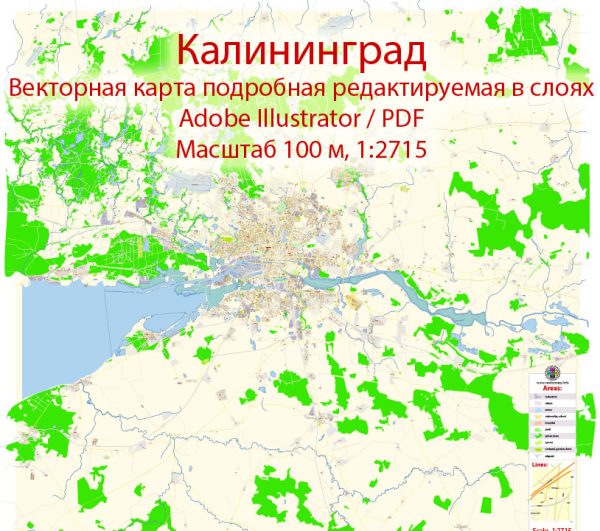Kaliningrad, formerly known as Königsberg, has a rich and complex history of urban development. Here is an overview of key historical periods in the urban development of Kaliningrad:
- Teutonic Knights and the Foundation of Königsberg (1255):
- The area that is now Kaliningrad was originally inhabited by Old Prussian tribes. In 1255, the Teutonic Knights, a medieval German military order, founded the city of Königsberg as a fortress and trading center.
- Hanseatic League and Renaissance (14th-16th centuries):
- Königsberg became a member of the Hanseatic League, a powerful medieval trading alliance. During this period, the city experienced economic and cultural growth, with the establishment of the University of Königsberg in 1544.
- The Duchy of Prussia (16th-17th centuries):
- Königsberg became the capital of the Duchy of Prussia, a fiefdom under the sovereignty of the Polish Crown. The city continued to flourish as a cultural and intellectual center.
- Kingdom of Prussia (18th-19th centuries):
- With the partitions of Poland, Königsberg became part of the Kingdom of Prussia in 1701. The city underwent significant architectural and infrastructural developments during this time, adopting a distinctly Prussian character.
- World Wars and Soviet Annexation (20th century):
- Königsberg was heavily damaged during World War II, particularly in 1944 and 1945. After the war, the city became part of the Soviet Union following the Potsdam Conference in 1945. It was renamed Kaliningrad in 1946 after Mikhail Kalinin, a prominent Soviet political figure.
- Soviet and Post-Soviet Era (20th-21st centuries):
- Kaliningrad underwent reconstruction under Soviet rule, with a focus on industrial development. The city’s architectural landscape was influenced by Soviet urban planning principles. Following the dissolution of the Soviet Union in 1991, Kaliningrad became an exclave, separated from the rest of Russia by other countries.
- Modern Development (21st century):
- In recent years, Kaliningrad has seen efforts to modernize its infrastructure and attract investment. The city remains an important economic and cultural center in the region. The Kaliningrad Special Economic Zone was established to stimulate economic growth, and there have been initiatives to improve transportation links with neighboring countries.
The history of Kaliningrad reflects the shifting political and cultural influences in the region, from Teutonic knights to the Hanseatic League, the Kingdom of Prussia, Soviet rule, and the challenges of the post-Soviet era. Each of these periods has left its mark on the city’s architecture, culture, and identity.


 Author: Kirill Shrayber, Ph.D.
Author: Kirill Shrayber, Ph.D.